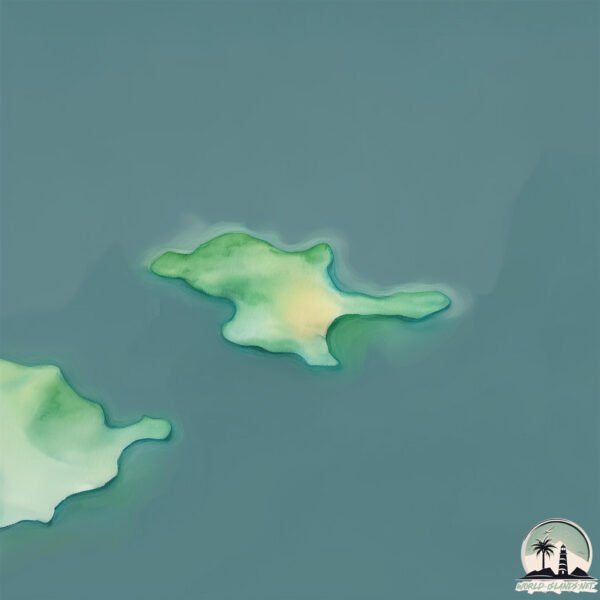Welcome to West Channel , a Continental island in the Gulf of Alaska, part of the majestic Pacific Ocean. This guide offers a comprehensive overview of what makes West Channel unique – from its geography and climate to its population, infrastructure, and beyond. Dive into the details:
Geography and size of West Channel
Size: 0.377 km²Coastline: 4.6 kmOcean: Pacific OceanSea: Gulf of AlaskaContinent: North America
West Channel is a Tiny Island spanning 0.377 km² with a coastline of 4.6 km.
Archipel: –
Tectonic Plate: North America – Covers North America and parts of the Atlantic and Arctic Oceans, characterized by diverse geological features and varying levels of seismic activity.
The geographic heart of the island is pinpointed at these coordinates:
Climate and weather of West Channel
Climate Zone: ContinentalClimate Details: Subarctic ClimateTemperature: Cold Summer
Climate Characteristics: Characterized by long, extremely cold winters and short, cool summers, often found in northern latitudes of North America and Eurasia.
Topography and nature of West Channel
Timezone: UTC-09:00Timezone places: America/AnchorageMax. Elevation: 29 m Mean Elevation: 23 mVegetation: Herbaceous CoverTree Coverage: 100%
The mean elevation is 23 m. The highest elevation on the island reaches approximately 29 meters above sea level. The island is characterized by Plains: Flat, low-lying lands characterized by a maximum elevation of up to 200 meters. On islands, plains are typically coastal lowlands or central flat areas.
Dominating Vegetation: Herbaceous Cover
Vegetation: 1 vegetation zones – Minimal Diversity Island
Infrastructure and Travelling to West Channel
Does the island have a public airport? no .
Does the island have a major port? no .
The mean population of West Channel is 0 per km². West Channel is Uninhabited. The island belongs to United States of America .
Continuing your journey, Sutwik is the next notable island, situated merely km away.
Channel Islands National Park 101: Essential Tips for First-Time Visitors
Channel Islands National Park is a true gem of the Californian coast, and in this video, we're here to help first-time visitors make ...
Channel Islands National Park 101: Essential Tips for First-Time Visitors
Channel Islands National Park is a true gem of the Californian coast, ...
Channel Islands National Park is a true gem of the Californian coast, and in this video, we're here to help first-time visitors make ...
Why doesn't France own the Channel Islands? (Short Animated Documentary)
The Channel Islands lie just over a dozen miles off the coast of ...
The Channel Islands lie just over a dozen miles off the coast of France and six times closer to it than England. In spite of its ...
West of the West: Tales from California's Channel Islands
Don't miss the upcoming premiere of “West of the West: Tales from ...
Don't miss the upcoming premiere of “West of the West: Tales from California's Channel Islands,” directed and edited by Brent ...
United States of America is classified as Developed region: G7: Group of Seven – Major advanced economies, including Canada, France, Germany, Italy, Japan, the United Kingdom, and the United States. The level of income is High income: OECD.
News – Latest Updates and Headlines from West Channel
Stay informed with the most recent news and important headlines from West Channel. Here’s a roundup of the latest developments.
Loading...
Please note: The data used here has been primarily extracted from satellite readings. Deviations from exact values may occur, particularly regarding the height of elevations and population density. Land area and coastline measurements refer to average values at mean high tide.

